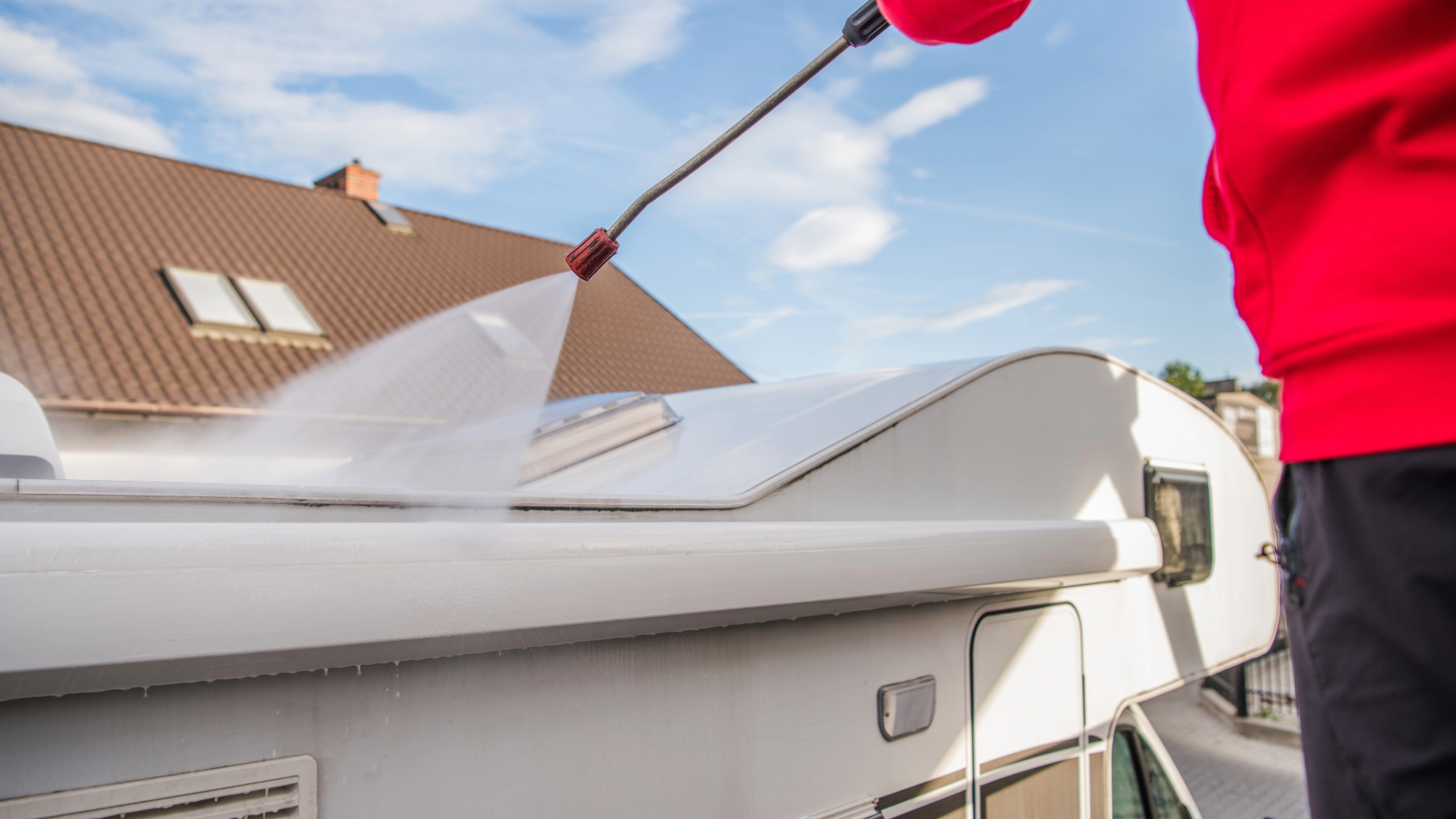Your RV’s roof may not always be on your mind, but it plays a vital role in protecting your home-on-wheels. Since it’s exposed to the elements year-round—enduring rain, UV rays, wind, falling debris, and even snow—regular maintenance is essential to prevent leaks and costly damage.
By following a few simple maintenance steps, you can keep your RV’s roof in excellent condition, ensuring it continues to protect you and your travels for years to come. Let’s go over some essential care tips!
1. Clean Your RV Roof Twice a Year
A well-maintained roof starts with cleanliness! Washing your RV’s roof at least twice a year—ideally in spring and fall—helps remove dirt, grime, and debris that can wear down the surface over time. Regular cleaning also gives you a chance to spot any early signs of trouble, such as cracks, bubbling, or other abnormalities.
Use a soft-bristle brush and a mild, RV-safe cleaner suited to your specific roof type—whether rubber, fiberglass, or another material. Harsh chemicals can cause damage, so always opt for products designed specifically for RVs.
2. Inspect Seals & Look for Damage
While cleaning, take time to inspect the roof for any cracks, tears, or signs of deterioration. Pay close attention to areas around vents, skylights, and air conditioners, as these spots are prone to leaks. Over time, sealants degrade, so checking and replacing them when necessary is crucial to preventing water damage.
Even minor cracks or loose seals can lead to water seeping inside, causing expensive damage. Catching these issues early can save you time, stress, and money in the long run.
3. Can You Walk on Your RV Roof?
Many RV owners wonder if their roof is safe to walk on. The answer? It depends! Some RVs come with ladders, indicating the roof is designed to support weight, but that doesn’t always mean it’s entirely safe.
Before stepping on your roof, consider its condition. If it feels soft, brittle, or shows signs of wear, avoid walking on it. If you’re unsure, use a telescoping ladder or a roof-cleaning extension tool to handle maintenance without putting yourself at risk. Safety first!
4. When Should You Reseal or Re-coat Your RV Roof?
The frequency of resealing depends on several factors, including how often you use your RV, your climate, and the overall condition of the roof. As a general rule, resealing is recommended every 1-3 years. However, regular inspections will help you catch any issues early before they turn into bigger problems.
Applying a fresh sealant helps maintain the roof’s waterproof barrier, preventing leaks and preserving the structural integrity of your RV. Being proactive with resealing can save you from expensive repairs down the road.
5. Preventive Maintenance Makes All the Difference
Like any other part of your RV, a little preventive care goes a long way. Don’t wait for leaks or damage to appear—regular maintenance ensures your roof stays in excellent shape, extends the life of your RV, and protects your investment.
6. Need Expert Help? We’ve Got You Covered!
If you’re unsure about your RV roof’s condition or want professional maintenance before your next adventure, we’re here to help. Our team offers thorough inspections and expert services to keep your RV road-ready.
For peace of mind and expert care, visit thervdr.com today!

